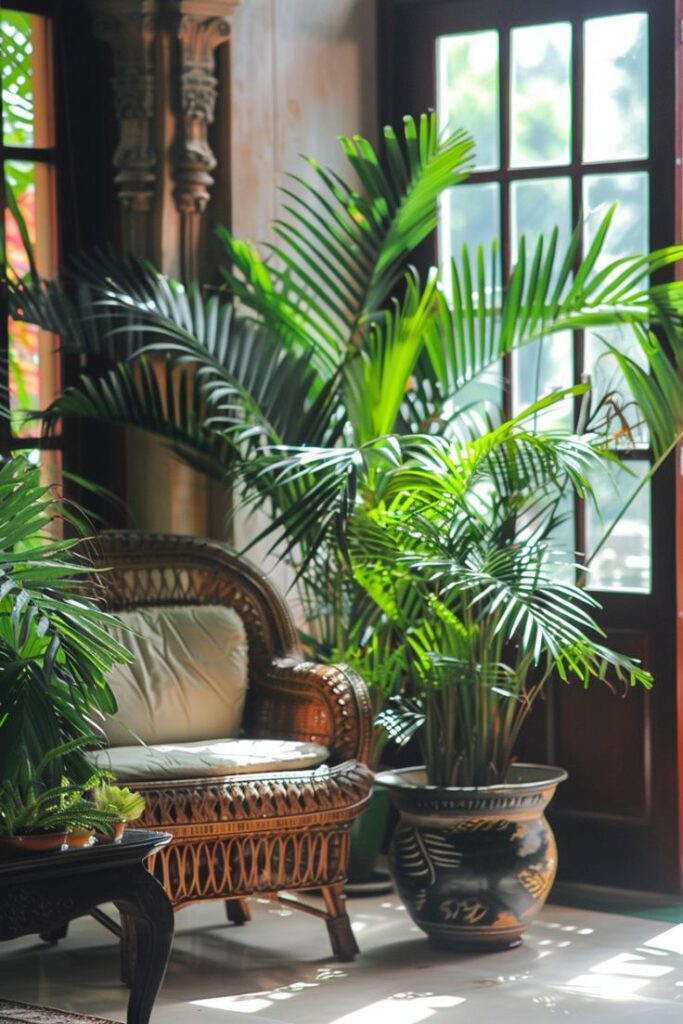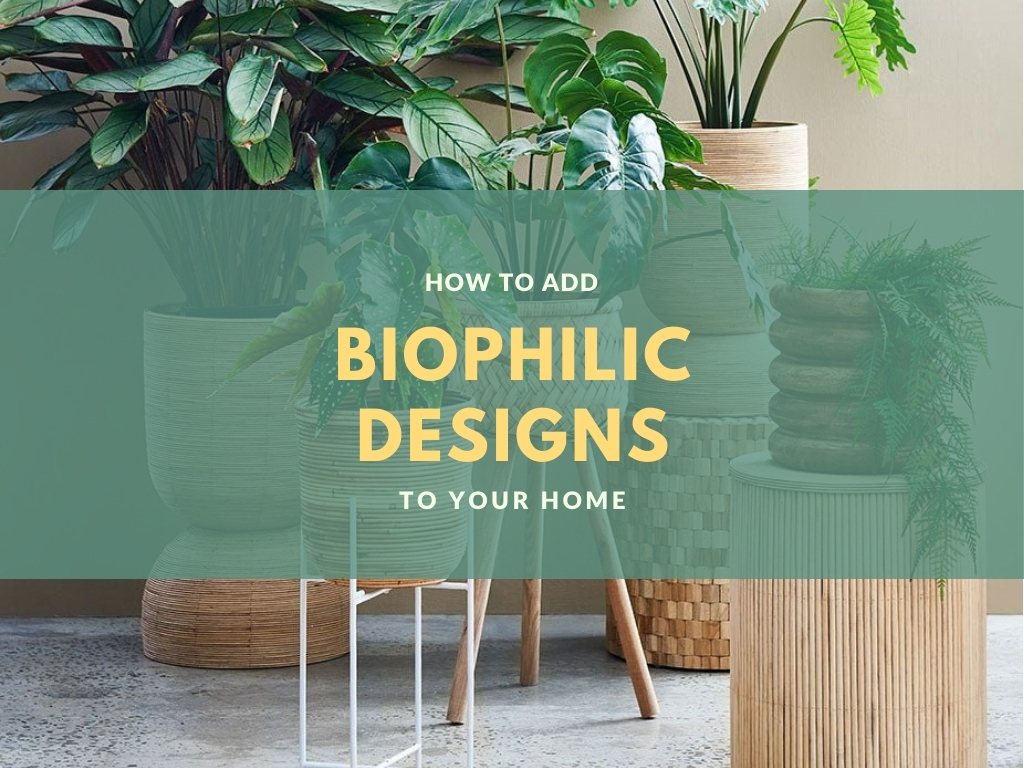
In recent years, the concept of biophilic design has gained considerable amount of attention as people seek to harmonize their living spaces with the natural world. This approach not only enhances aesthetic appeal but also improves mental well-being and productivity. At its core, biophilic design creates a strong connection between humans and nature through various elements. This blog will delve into the key aspects of biophilic interiors, including adding greenery, maximizing natural light, incorporating water elements, using natural materials, and embracing earthy tones, demonstrating how these elements combine to create a serene and balanced environment.
Adding Greenery

One of the most straightforward ways to infuse biophilic design into your space is by incorporating greenery. Plants bring life to interiors, purify the air, and create a calming atmosphere. Consider a variety of plants that suit your space’s lighting conditions and maintenance level. From large, leafy monstera or rubber plants for spacious areas to smaller succulents or hanging ferns for tighter spots, there’s a plant for every environment. Greenery not only adds color and texture but also mimics natural landscapes, creating a refreshing indoors.
Maximizing Natural Light

Natural light is a cornerstone of biophilic design. It not only illuminates spaces but also influences mood and energy levels. To maximize natural light, consider large windows, skylights, or glass doors that invite sunlight into the room. Choose sheer curtains or blinds that diffuse light rather than block it out. The placement of mirrors can also enhance the distribution of natural light, making spaces feel brighter and more open. By integrating natural light, you can create an inviting and uplifting atmosphere that reflects the changing moods of the day.
Incorporating Water Elements

Water features, such as fountains, small indoor ponds, or even a water wall, add a dynamic and soothing element to your interior. The sound of flowing water can reduce stress and promote relaxation, while its visual presence contributes to a calming and refreshing environment. When integrating water elements, consider their scale and placement to ensure they complement rather than overwhelm the space. A small tabletop fountain or a wall-mounted feature can be effective in smaller areas, while larger features might be more suitable for spacious rooms.
Using Natural Materials

Natural materials like wood, stone, and clay are fundamental to creating a biophilic interior. These materials not only bring the essence of the outdoors inside but also provide texture and warmth. Wooden floors, stone accent walls, and clay or ceramic tiles can contribute to a natural, earthy feel. Choose materials with textures and colors that resonate with nature, such as reclaimed wood or natural stone, which can add character and a sense of history to your space. These elements help ground the design and enhance the connection with the natural world.
Embracing Earthy Tones

Color plays a significant role in biophilic design. Earthy tones such as greens, browns, and blues evoke the natural world and create a soothing environment. These colors can be incorporated through wall paint, furniture, fabrics, and accessories. Soft green hues can mimic the tranquility of a forest, while deep blues can evoke the calm of a water body. Earthy tones not only enhance the visual connection to nature but also promote relaxation and comfort, making your space a more inviting sanctuary.
Bringing It All Together
When integrating biophilic elements into your interior, it’s essential to create a cohesive design that harmonizes all aspects. Start by establishing a balance between greenery, natural light, water features, and natural materials. For instance, pair a large indoor plant with a wooden planter and a stone accent wall to create a natural focal point. Use earthy tones in your decor to tie these elements together and reinforce the connection to nature. Ensure that each element complements rather than competes with the others, maintaining a sense of harmony and tranquility.

In addition to these core elements, consider incorporating patterns and textures inspired by nature. For example, rugs with leaf patterns or cushions with earthy textures can further enhance the biophilic theme. Art pieces depicting natural scenes or abstract representations of natural forms can also contribute to the overall ambiance.
The Benefits of Biophilic Interiors
Integrating biophilic design elements into your space offers numerous benefits beyond aesthetic appeal. Research has shown that exposure to nature can reduce stress, improve mood, and increase productivity. By creating a living environment that reflects the natural world, you can foster a sense of well-being and connection that enhances your quality of life.
In conclusion, biophilic interiors are about more than just adding a few plants or using natural materials; they are about creating a holistic environment that nurtures a deep connection to nature. By thoughtfully incorporating greenery, maximizing natural light, integrating water elements, using natural materials, and embracing earthy tones, you can transform your space into a harmonious and rejuvenating haven. This design philosophy not only enriches your living environment but also supports overall health and well-being, making it a valuable approach for modern interior design.

